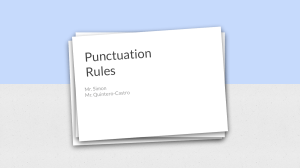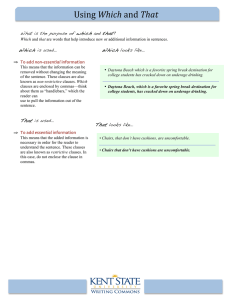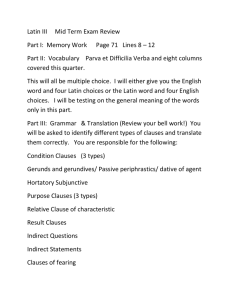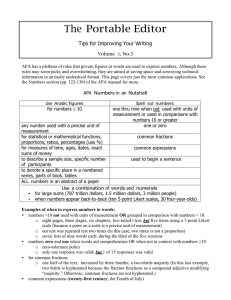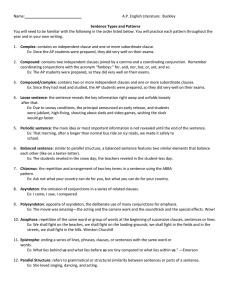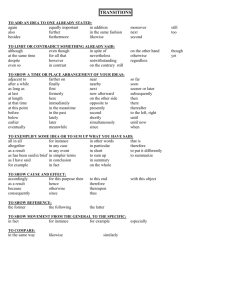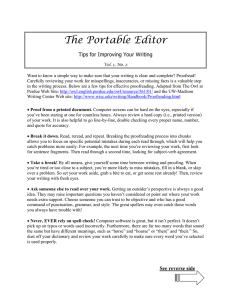The Portable Editor Tips for Improving Your Writing
advertisement
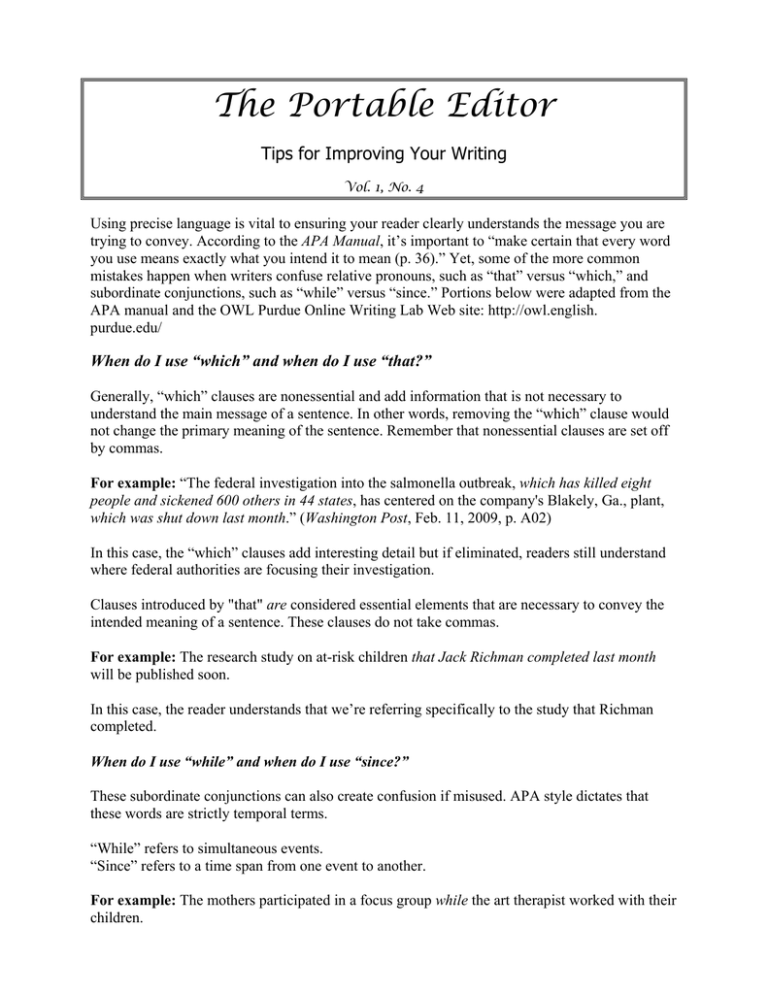
The Portable Editor Tips for Improving Your Writing Vol. 1, No. 4 Using precise language is vital to ensuring your reader clearly understands the message you are trying to convey. According to the APA Manual, it’s important to “make certain that every word you use means exactly what you intend it to mean (p. 36).” Yet, some of the more common mistakes happen when writers confuse relative pronouns, such as “that” versus “which,” and subordinate conjunctions, such as “while” versus “since.” Portions below were adapted from the APA manual and the OWL Purdue Online Writing Lab Web site: http://owl.english. purdue.edu/ When do I use “which” and when do I use “that?” Generally, “which” clauses are nonessential and add information that is not necessary to understand the main message of a sentence. In other words, removing the “which” clause would not change the primary meaning of the sentence. Remember that nonessential clauses are set off by commas. For example: “The federal investigation into the salmonella outbreak, which has killed eight people and sickened 600 others in 44 states, has centered on the company's Blakely, Ga., plant, which was shut down last month.” (Washington Post, Feb. 11, 2009, p. A02) In this case, the “which” clauses add interesting detail but if eliminated, readers still understand where federal authorities are focusing their investigation. Clauses introduced by "that" are considered essential elements that are necessary to convey the intended meaning of a sentence. These clauses do not take commas. For example: The research study on at-risk children that Jack Richman completed last month will be published soon. In this case, the reader understands that we’re referring specifically to the study that Richman completed. When do I use “while” and when do I use “since?” These subordinate conjunctions can also create confusion if misused. APA style dictates that these words are strictly temporal terms. “While” refers to simultaneous events. “Since” refers to a time span from one event to another. For example: The mothers participated in a focus group while the art therapist worked with their children. In this case, the mothers and the art therapist are involved with different actions at the same time. For example: Since 1993, when Making Choices was introduced, more than 13,000 sixth graders have received the intervention. In this case, it’s understood that we’re talking about the number of students who have participated in the program since it started. “While” and “since” are often misused to introduce background information or give the reason for a subsequent action. However, the precise language choices for these functions include although, nevertheless, because, or given. For example: Although many researchers have examined family dynamics, few have investigated children’s relationships with their nonresidential fathers. For example: Our agency has launched a new HIV-prevention program that targets young women (18 to 25 years old) given that HIV/AIDS is the leading cause of death for that age cohort of American females. For example: Because patients can be overwhelmed by information about their illness and treatment options, health care counselors should be prepared to discuss patients’ questions without offering medical advice. For example: We used a variety of recruitment strategies to ensure the sample would reflect the diversity of the high-school population; nevertheless, we were unable to recruit any members from the skateboarder subgroup. Interested in Individual Writing Help? Drop-in Writing Support Every Monday, Noon–1 p.m. Office 548E One-on-One Writing Support Please e-mail or call to schedule an appointment Diane Wyant–dwyant@email.unc.edu Office 548E, 842-5575 Wednesdays: Noon–2 p.m.; 5 p.m.–6:30 p.m. Susan White–sewhite@email.unc.edu Office 302C, 962-6418 Mondays: Noon–2 p.m.; Tuesdays: 5 p.m.–6:30 p.m.; Fridays: Noon–2 p.m. These hours are reserved for students, but other times may be available.
